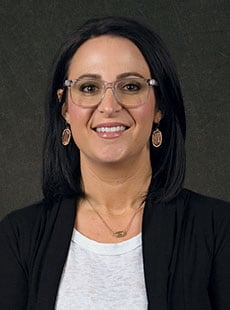 Course Introduction
Course Introduction
Core Standards of the Course
STRAND 1
Sports & Recreation Events - Students will explore the varied world of recreation and sports events.
Standard 1
Explore recreation and sports opportunities available in your area. Examples: hiking, mountain biking, rock climbing, snowboarding, skiing, Ice skating, hunting, baseball, golf, soccer, and football
-
Define recreation: an activity done for enjoyment.
-
Define sports: activity involving physical exertion and skill in which an individual or team competes against another or others for entertainment.
Standard 2
Identify programs (both individual and team) for youth, adults, and seniors in your school, city, and state.
-
Seasonal recreational programs
-
City sports leagues
-
Club sports teams
-
Youth, adult, and seniors fitness programs
-
UHSAA sanctioned events
-
Evaluate events held in your community that an integrated marketing campaign can be developed to increase attendance, participation, or fundraising.
-
Determine which event you will use to create an integrated marketing campaign.
STRAND 2
Campaign Objectives - Students will be able to write SMART campaign goals that meet the organization or entity's vision for the event.
Standard 1
Distinguish between commonly used campaign goals and determine appropriate goals for your marketing campaign.
Standard 2
Demonstrate evidence of marketing knowledge by describing goals that will challenge the student's abilities and are still attainable.
Standard 3
Research-based goals - Demonstrate a variety of key metrics both digital and traditional metrics, that can be used in the goal-setting process
Performance Skills
Create at least three campaign objectives using the SMART goal format.
STRAND 3
Campaign Target Market - Students will be able to identify and utilize relevant primary and secondary markets.
Standard 1
Marketing Segmentation - Describe how marketing segmentation can be used to think through who your primary and secondary markets are. Briefly review marketing segmentation.
-
Demographics
-
Geographics/Location
-
Psychographics/Interests
-
Behavioral (Provide specific details such as season/annual pass holders, merchandise purchases, and social engagement)
-
Targeting your marketing efforts to attract participants, fans, and community. engagement through the use of specific keywords.
-
Determine a unifying theme or central message that will engage participants.
-
Brand your campaign with a common look and feel.
Standard 3
Campaign Season - Identify the seasonality of the event that is taking place. Highlight examples from both the sporting and recreational industries.
-
Define Seasons: based on the time of year and the holidays.
-
Identify a promotional campaign that fits the appropriate season of your event.
-
Explain the purpose is to create brand or event awareness and build anticipation throughout the year
STRAND 4
Sponsors or Corporate Partnerships - Students will understand the relationship between sponsors and the recreation and sports events.
Standard 1
Describe the concept of sponsorship and the importance of the relationship between sponsors and recreation and sports organizations.
-
Define, understand, and identify sponsorship and sponsorship levels, including the benefits and challenges of sponsoring an event or entity.
-
Challenges
-
Discuss reasons a company would be involved in a recreational or sports event.
Standard 2
Sponsorship Strategy - Describe the process of finding and building relationships with sponsors that share the same values and target market.
-
Identifying potential sponsors
-
Sponsorship goals
-
Understand the concept of borrowed equity: utilizes the appeal of an event to market products, increases sponsorship demand for the event
-
Creating a sponsorship proposal
Standard 3
Sponsorship Evaluation
-
Evaluate the sponsor's effectiveness
-
Assessing return on investment (ROI):
-
Measuring the brand awareness of a sponsor
-
Obtaining and analyzing customer feedback
Performance Skill (Choose one)
-
Identify at least 10 possible sponsors for an event that share the same target audience.
-
Create a sponsorship proposal that includes the levels of sponsorship, the cost, and benefits to the business for becoming a sponsor.
STRAND 5
Marketing Campaign Activities and Schedule - Students will explore and determine the marketing campaign activities and promotions that will be used for the event.
Standard 1
Explore the brainstorming process of creating a campaign theme for a recreation or sports event.
Standard 2
Campaign Activities - Describe possible choices for effective campaign activities.
-
Direct students to consider the target audience of the event.
-
Select and develop the activities you will use to promote the event
- Discuss activities that encourage registration or competitor sign-up
- What do participants gain from participating
- Beneficiaries of the event such as non-profits
- Entertainment
- Legacy Events
- Extrinsic and intrinsic Incentives or clear benefits from participating
- Discuss activities that encourage audience attendance
- Theme nights
- Giveaways
- Half-time shows or performances
-
Unifying theme: throughout all campaign activities
-
Promote the campaign activities and event
Standard 3
Campaign Schedule and Calendars
-
Campaign Calendar: An overview of the campaign that provides the ability to view the entire campaign in one place.
-
Campaign Schedule: A breakdown of specific dates and times of identified promotions for the campaign. Can be created by day, week, or by platform or media.
-
Create three high-quality, appropriate, and creative promotional materials.
-
Create a 45-day calendar and a daily or weekly schedule of the campaign activities and promotions.
STRAND 6
Event Budget - Students will be able to create a detailed projection of the actual cost for the marketing of the event and all promotional activities and materials.
Standard 1
Research Projected Cost - Research the campaign event type and identify the applicable cost.
-
Venue: a building, gym, park, stadium, or facility
-
Venue costs may be different based on the type of venue needed for the event i.e. building, gym, park, stadium, or facility rental
-
Staff:
-
Staffing costs based on the event could include or be added to the facility rental. Ensure when you are researching the venue, ask which of the following may need to be paid separately.
-
Look for both primary and secondary research on vendors
Standard 2
Marketing Budget Categories - Identify commonly used categories when budgeting for a marketing campaign
-
Media Production
-
Web Designer
-
Graphic Designer
-
Copy Writer
-
Print Promotion
-
Influencer(s) or SM Content Creator
-
Public Relations
-
Merchandise
-
Conduct primary and secondary research for potential vendors
-
Create a realistic budget for a campaign that includes all incurred costs
STRAND 7
Key Metrics - Students will understand various key metrics to determine the success of a recreation or ports campaign.
Standard 1
Discuss qualitative metrics that will be used to measure campaign success.
Standard 2
Discuss quantitative metrics that will be used to measure campaign success
-
Quantitative Metric: a set of measurements that objectively evaluate your product or company's performance
Performance Skills
Use your three campaign objectives to identify and select a related metric(s) to evaluate the success of the campaign
STRAND 8
Pathways, Post Secondary, and Careers - Students will understand the opportunities to graduate as a pathway completer, the post-secondary programs and Career opportunities in Marketing.
Standard 1
Highlight the courses offered at your school in the marketing pathway.
Standard 2
Explore post-secondary school programs in the region
Standard 3
Explore potential careers in sport and recreation marketing. Include average salaries, benefits, flexibility, and work/life balance.
-
Athletic Director
-
Program Directors
-
Youth Programs
-
Park Operations
-
Athletics Supervisor
-
Recreation Management
-
Sports Event Planner
-
Sales Manager
-
Community Outreach Coordinator
-
Outdoor Recreation Leadership
-
Therapeutic Recreation
-
Adaptive Sports
-
Entrepreneurial Opportunities


 UTAH EDUCATION NETWORK
UTAH EDUCATION NETWORK

 Justin
Justin Braxton
Braxton Dani
Dani Rob
Rob Val
Val
